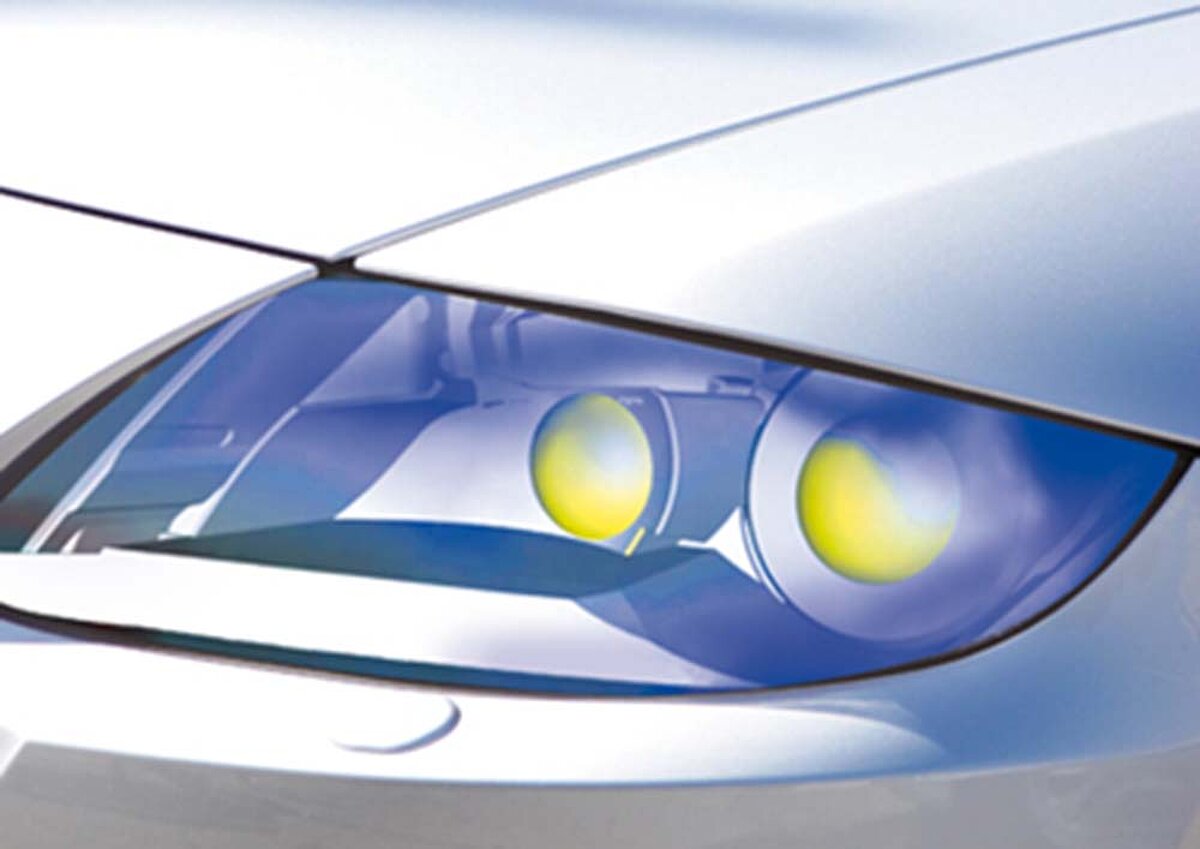Methodenentwicklung zur Enttauungssimulation von Scheinwerfern unter Berücksichtigung von Strahlung und freier Konvektion.
Spotlight Method Development

Task / Calculation
Headlights are the eyes of the car. In addition to the design, the illumination of the road and the surroundings is especially important.
If you're a glasses wearer coming in from the cold and entering a warm room, you can observe an undesirable effect: The glasses fog up. If you have a handkerchief with you, you will soon have a clear view again.
But what needs to be taken into account if you also want to quickly regain a clear view with car headlights?
Let's take a look at the physics involved.
Air has the property of absorbing more water at high temperatures than at low temperatures. If the air is very dry, this is not a problem. When humidity is high and temperatures drop, the now excess water is deposited on cold surfaces. This physical process is called condensation or dew formation.
In certain weather conditions, pig headlights are also blind, for example, when driving off. Small water droplets have settled on the inside of the lens.
In countries with high humidity, however, fogged headlights do not look particularly attractive in daylight.
The first thing to do is to prevent water from penetrating the housing.
Through targeted ventilation and heat from the lamps or, in the case of LEDs, from the electronics, these water droplets evaporate again. This is called defrosting. This process should happen as quickly as possible.
The moisture should be transported to the outside.
Method development
Merkle & Partner has developed a method for simulating this defrosting process.
Physical effects that play a role here are
- Air humidity
- Temperature of the wall and the air
- Radiation
- Absorption
- Reflection
- Transmission (wavelength-dependent)
- Flow in the headlight (forced convection)
- Free convection when the vehicle is stationary
These are various disciplines that must be taken into account in a simulation model in order to be able to describe the defrosting behavior mathematically.
But how can the air flow through the headlamp be targeted so that the trapped moisture escapes? This is achieved by means of appropriate vent holes. However, air only flows if there are pressure differences between the holes.
These result from the flow around the moving vehicle or the headlight installed in the vehicle.
The difficulty lies in the fact that the vehicle geometry and installation conditions are often not available to the developers of headlights. They often make do with test results from previous models. The pressure difference is obtained by extending hoses in the engine compartment.
The simulation shows how effective the selected vent holes are in terms of defrosting behavior, either assuming the pressures, but also in the installed state on the complete vehicle,
However, other effects that have not yet been solved play a major role for the defrosting process.
This is the subject of current research investigations at Merkle & Partner.
Keywords
- Defrosting
- Spotlight
- CFD analysis
- Flow simulation
- Method development
- LED headlights
- Humidity